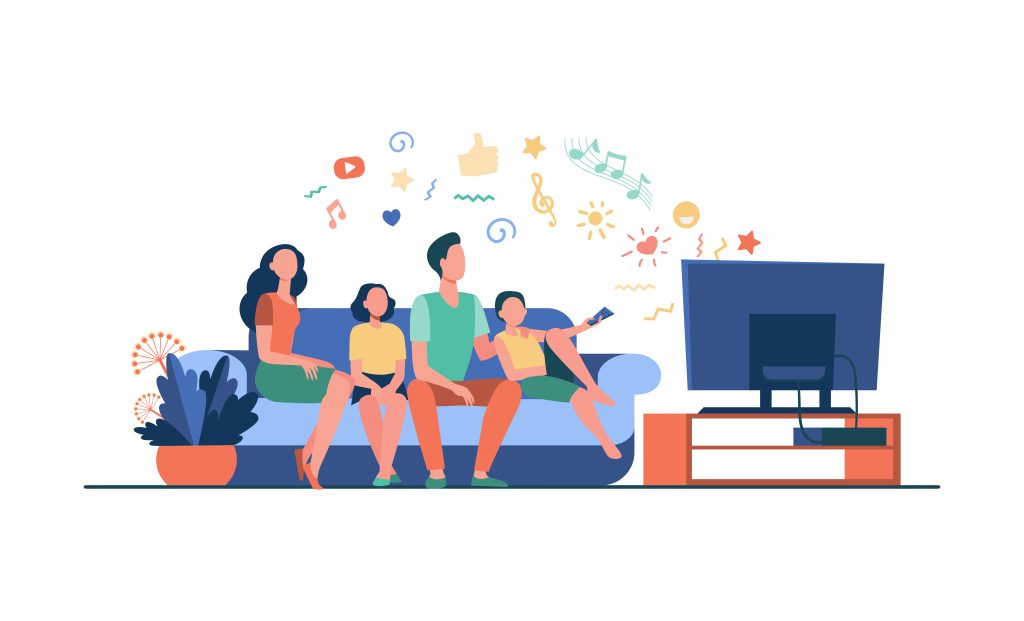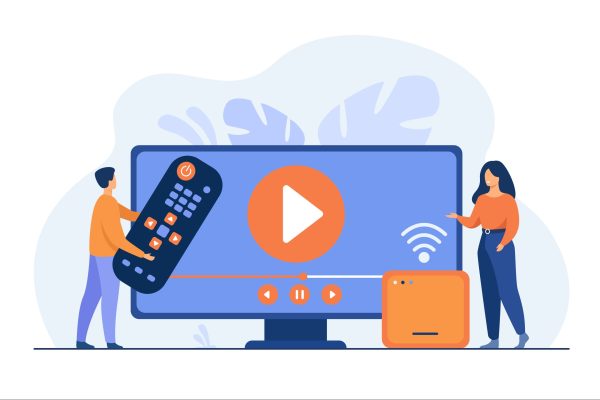Recording refers to a system, VOD focuses on “selecting and watching”, then recording focuses on “recording”. A recording system integrates live video, audio, and other content to produce common mp4 and avi streaming files for on-demand and live viewing.
-What is the difference between on-demand, recording and live streaming?
-How do on-demand, recording and live streaming bring video to our eyes?
-How do video services affect our lives?

What is the difference between VOD, VOD and live streaming?
Video On Demand, or VOD for short, where Demand means On-Demand, literally means video on demand. Live broadcast, in the broadest sense, also includes live TV stations, but here we generally refer to live web video.
Live broadcast audio and video is pushed to the server in the form of a media stream (push stream). If there are viewers watching the live broadcast, the server will transmit the video to the player of the website, APP or client after receiving the request from the user, and play the video in real-time.
The TV series, anime and movies that people watch on video sites such as Akiyay, where they can adjust the playback speed and select the clips to watch themselves, are all considered on-demand. Content creators will use various hardware (cameras, camcorders, capture cards, etc.) and software will be used to record and process these videos, i.e. to record and broadcast them.
In the case of live broadcasts of games, shows and football matches, there is no way to control the progress of the broadcast or to select the clips we watch.
Various hardware (cameras, camcorders, capture cards, etc.) and software are used to record and process these videos, i.e. to record and broadcast them.
In the case of live broadcasts of games, shows and football matches, there is no way to control the progress of the broadcast or to select the clips we watch.
1. Recording system
Firstly, the audio and video content is captured and processed by a recording system. The content is then uploaded to the web and made available for viewing.
Let’s take a look at how the simplest recording system can be implemented. Let’s say you’ve just got a new iPhone and want to record a live unboxing video, how do you do that?
The simplest solution is to prepare a video recording app and a phone (to capture video) and microphone (to capture sound), find a quiet house and record. After recording the video, you can finish editing it on your mobile phone and post it on the internet.
2. Video-On-Demand system
The seemingly simple act of a user playing a video on demand on the internet is the result of a system integration exercise. This includes important technologies such as video compression, network transmission and database storage.
Firstly, the video provider takes the recorded video, stores it on its own servers and creates an indexed catalog. This is like a book, where the table of contents will clearly label the page.
Firstly, the video provider takes the recorded video, stores it on its own servers and creates an indexed catalog. This is like a book, with the table of contents clearly labelled with the page.
Number of each chapter, so that the reader only has to look at the table of contents to quickly find the text they want to see.
Then, when a user clicks on a video, an on-demand request is sent out. Once the server receives this request, it finds the video information that exists in the programme library, synthesises the video stream and transmits it to the user’s browser over the network. Have a look at our end-to-end VOD solution.
3. Live Streaming System
A complete live streaming system is divided into 4 main modules.
(1) capturing video through equipment such as cameras.
(2) processing of the captured video, such as beauty, video encryption, watermarking, etc.
(3) Compression and encoding of the processed video.
(4) Distribute the video through CDN nodes. Know more about our global CDN.
Once the video is distributed to the broadcasters (users), the users are willing to interact with the anchor, so there will be features such as likes, chat and pop-ups, as well as advanced props such as gifts.
Generally speaking, there is not one-on-one correspondence between the content producer and the consumer. In the case of live education, one teacher will be dealing with hundreds or thousands of students at the same time. Therefore, it is very difficult to communicate peer-to-peer between the presenter and all the broadcasters.
The video on the lecturer’s end needs to undergo complex processing before it reaches the playback side, where the common live streaming server-side is located.
The main responsibility of the live server is to collect the lecturer’s video stream, process it and push it to the user. In addition to this core function, there are many operational level requirements such as authorised viewing, video stream encryption, video linking, video transcoding, and cloud-based recording and storage functions.
TOVP one stop video-on-demand solution combines video and audio capture, editing, uploading, automated transcoding, media resource management, distribution acceleration and video playback in a one-stop video-on-demand solution.Talk to our engineers for more!
